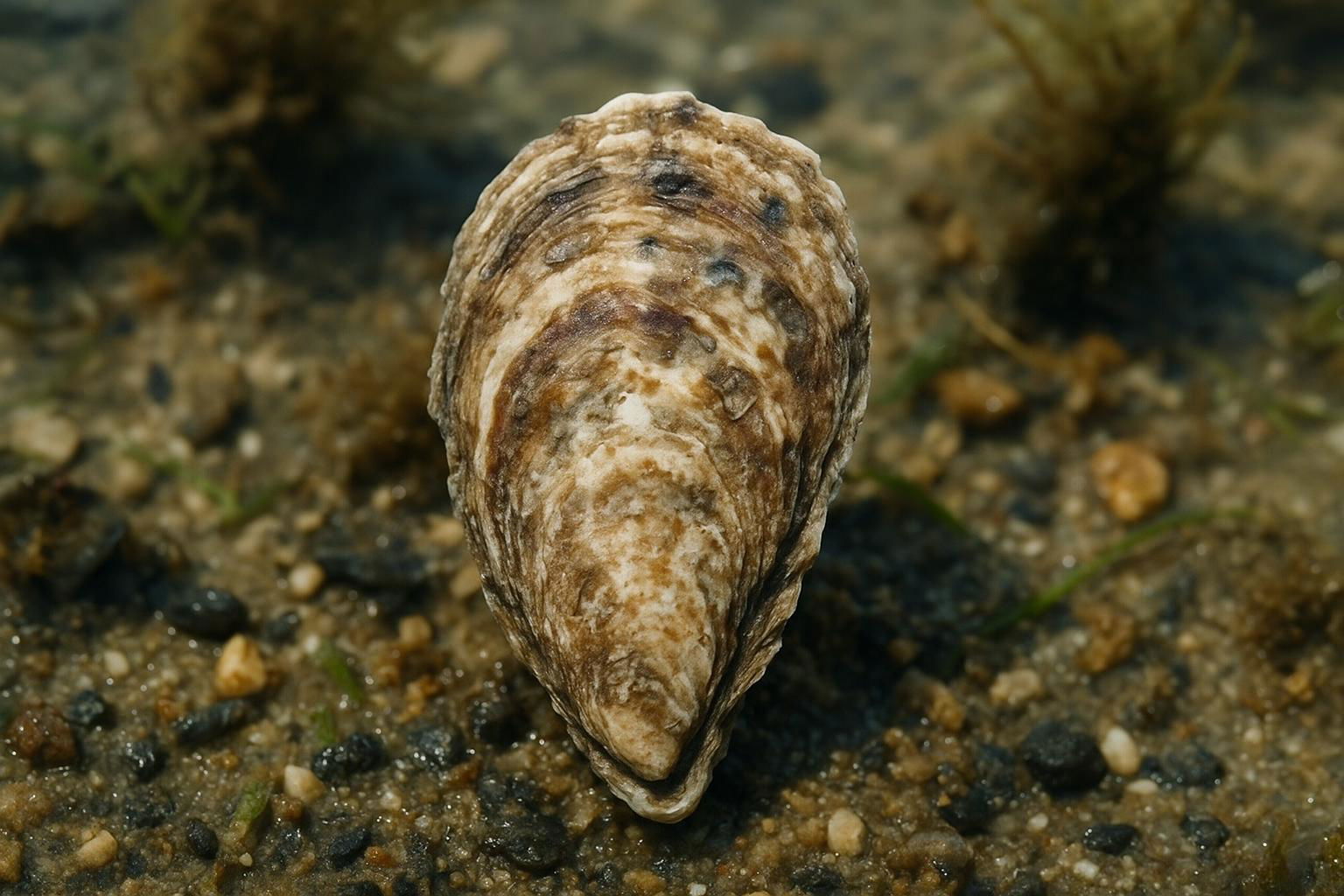
Eastern Oyster
Crassostrea virginica
The Eastern Oyster, scientifically known as Crassostrea virginica, is a bivalve mollusk native to the Atlantic and Gulf coasts of North America. Renowned for its ecological and economic importance, this species thrives in estuarine environments where saltwater and freshwater mix. The Eastern Oyster has an irregularly shaped, rough-textured shell, typically grayish in color, with a creamy white interior. These oysters are filter feeders, playing a crucial role in maintaining water quality by filtering out plankton and suspended particles. They can filter up to 50 gallons of water per day, significantly contributing to the health of marine ecosystems. Eastern Oysters form dense beds or reefs, providing habitat and protection for a myriad of marine species. Notably, these oysters can tolerate varying salinity levels but are sensitive to pollution and overharvesting, making conservation efforts vital. In addition to their ecological importance, Eastern Oysters are highly valued in the seafood industry for their distinctive, briny flavor, making them a popular delicacy. Their role in both marine ecology and human cuisine underscores the need for sustainable management practices.
Colors: White to Gray
 All Species & Breeds
All Species & Breeds
 Highland Cattle
Highland Cattle
 Miniature Donkeys
Miniature Donkeys
 All Species Directory
All Species Directory
 Highland Cattle in Virginia
Highland Cattle in Virginia
 Miniature Donkeys in Texas
Miniature Donkeys in Texas












